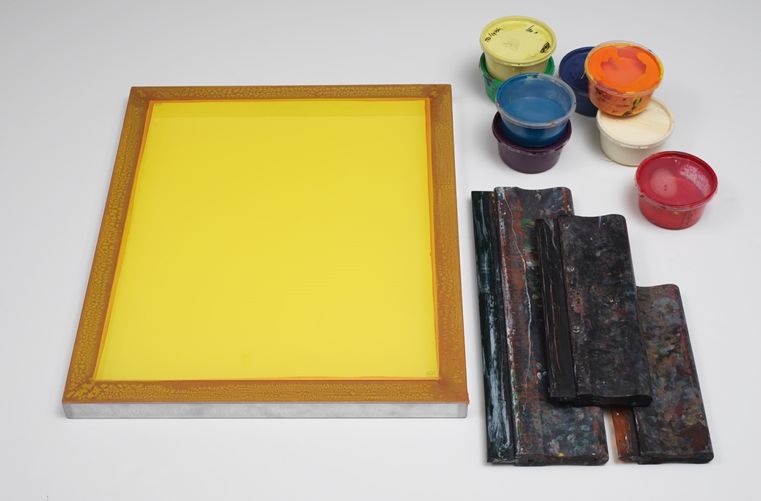ChatGPT said: How 10:9 Design Texas is leading the screen printing industry
The Necessary Guide to Understanding Screen Printing and Its Versatile Utilizes
Screen printing has a rich background that dates back to old times, developing right into an advanced technique made use of across different sectors today. This guide discovers the complexities of the screen printing process, describing its applications in home, advertising and marketing, and fashion décor - 10:9 Design Embroidery. Comprehending these principles can open up imaginative potential for both industrial and imaginative jobs. The adhering to sections will disclose important pointers and techniques to boost one's screen printing ventures
The Background of Screen Printing
Screen printing has origins that trace back centuries, its advancement shows the creative and technological developments of various societies. Stemming in old China, the strategy was originally made use of for enhancing fabrics and later infect Japan, where it became essential to Ukiyo-e woodblock printing. The technique moved to Europe in the 18th century, where it acquired popularity among artisans and commercial printers. The innovation of picture solution in the 20th century revolutionized screen printing, enabling more complex layouts and higher efficiency. Musicians like Andy Warhol additionally moved its appeal, using the medium to create legendary works that mixed commercialism and art. By the late 20th century, screen printing had developed itself as a flexible method, employed in vogue, advertising, and fine art. Today, it continues to evolve, incorporating electronic modern technology and increasing its applications across different industries.
The Screen Printing Refine Explained
Screen printing changes imaginative visions right into tangible layouts with a collection of accurate steps. A photo is produced and after that moved onto a screen, usually made of fine mesh textile stretched over a frame. A light-sensitive emulsion is applied to the screen, which is revealed to light, setting in areas not covered by the image. After cleaning out the unhardened solution, a stencil is formed.
Next off, the screen is placed over the substratum, whether it be textile, paper, or one more product. Ink is then pushed via the open areas of the pattern utilizing a squeegee, depositing the layout onto the substrate below. This procedure can be repeated for numerous shades, calling for different screens for each and every color. Finally, the printed product is treated using warm to guarantee the ink adheres correctly, leading to a long lasting, vibrant layout all set for use.
Kinds of Screen Printing Techniques

Additionally, specialized strategies, such as discharge screen printing, remove color from the material to create softer prints, while aluminum foil screen printing applies metallic foil to attain a shiny coating (10:9 Design near me). Each technique offers distinctive qualities, satisfying different imaginative requirements and production next scales, inevitably broadening the possibilities within the screen printing domain name
Applications of Screen Printing in Various Industries

Additionally, the signage and marketing industries make use of screen printing for creating appealing screens and banners. This technique permits vibrant shades and elaborate styles that catch focus. In electronics, screen printing is employed for applying conductive inks to circuit card, vital for component links. The home style sector welcomes screen printing to create unique layouts on textiles and wall surface art. On the whole, screen printing works as a critical device throughout diverse fields, improving products with individualized and aesthetically attractive graphics.
Tips for Successful Screen Printing Projects
While undertaking a screen printing task, cautious focus to detail can significantly improve the final end result. Selecting top quality materials is important; this includes the screen, inks, and substrates. Using suitable mesh counts can impact ink deposition and detail resolution. Prep work is equally essential; complete cleansing of displays and correct exposure times ensure crisp prints.
Next, exact enrollment is crucial for multi-color read what he said prints. Using alignment tools can assist accomplish specific layering. Furthermore, testing prints on scrap materials before production helps identify possible concerns without wasting resources.

Frequently Asked Questions
What Products Are Finest for Screen Printing on Textile?
Cotton and polyester blends are perfect for screen printing on material due to their longevity and ink absorption. Furthermore, specialty textiles like silk or canvas can generate special structures and coatings, improving the overall layout high quality.
How Do I Tidy and Maintain Screen Printing Devices?
To clean and maintain screen printing tools, one need to consistently clean displays with appropriate solvents, examine mops for wear, oil moving parts, and shop all items in a completely dry, dust-free atmosphere to extend their life expectancy.
What Are the Environmental Effects of Screen Printing?
Screen printing can have significant ecological influences, consisting of chemical waste from inks and solvents, water use throughout cleansing procedures, and energy consumption. Eco-friendly products and lasting practices are vital for reducing these adverse results.
Can Screen Printing Be Done in the house Successfully?
Screen printing can be properly done at home with the appropriate materials and techniques. Enthusiasts can produce quality prints, though success depends on their ability degree, devices, and understanding of the procedure included.
What Are the Expenses Connected With Beginning a Display Printing Company?

Starting a screen printing business entails expenses for devices, products, and workspace. Initial expenditures generally range from a few hundred to a number of thousand dollars, depending on the scale, top quality of machinery, and desired manufacturing capacity.
Screen printing has an abundant background that dates back to old times, evolving right into an advanced technique utilized across different markets today. An additional strategy, rotary screen printing, employs cylindrical screens, helping with constant printing on textile rolls, thereby enhancing effectiveness for massive manufacturings. In addition, specialty strategies, such as discharge screen printing, remove dye from the textile to create softer prints, while aluminum foil screen printing uses metal aluminum foil to accomplish a shiny finish. In the fashion sector, screen printing is widely used to create dynamic designs on apparel, enabling brand names to showcase their unique styles. Cotton and polyester blends are perfect for screen printing on fabric due to their longevity and ink absorption.